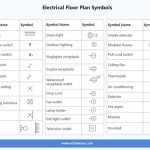Housing Plans and the FAFSA: Understanding the Connection
The Free Application for Federal Student Aid (FAFSA) is a crucial step for students seeking financial assistance for college. While often associated with tuition costs, the FAFSA also plays a significant role in determining eligibility for aid that can help cover housing expenses. Understanding how housing plans impact the FAFSA application can help students maximize their potential financial aid package.
The FAFSA form requires students to indicate their housing plans for the upcoming academic year. Options typically include living on campus, living off campus with family, or living off campus not with family. This selection influences the Cost of Attendance (COA) calculation, a critical component of the financial aid process. The COA represents the estimated total cost of attending a specific institution and includes tuition, fees, books, supplies, transportation, and, importantly, room and board.
Living on campus usually results in a higher COA due to the inclusion of room and board charges set by the institution. These charges often cover dormitory housing, meal plans, and sometimes access to campus amenities. While this might appear to increase the overall cost of education, it can also lead to higher potential aid eligibility. A greater COA can result in a larger gap between the student's Expected Family Contribution (EFC) and the total COA, which is the basis for determining financial need.
Choosing to live off campus with family typically results in the lowest COA. Since room and board expenses are assumed to be lower when living with family, the overall cost of attendance decreases. While this might seem financially advantageous, it can also lead to a lower financial aid package. A lower COA reduces the potential gap between the EFC and the COA, potentially minimizing the calculated financial need.
Living off campus not with family presents a more complex scenario. Students in this situation must estimate their off-campus housing expenses, including rent, utilities, and groceries. These estimates are crucial as they directly contribute to the COA calculation. Accurate estimations are vital to ensure that students receive an appropriate level of financial assistance that reflects their actual living costs. Overestimating or underestimating these expenses can lead to either receiving less aid than needed or facing unexpected financial burdens.
The FAFSA does not explicitly require proof of housing arrangements at the time of application. However, institutions may require supporting documentation later to verify the student's chosen housing plan. This can include lease agreements, utility bills, or other proof of residency. It is crucial for students to maintain accurate records of their housing arrangements to avoid complications with their financial aid disbursement.
Understanding the relationship between housing plans and the EFC is important. The EFC is a measure of a family's financial strength and is calculated based on the information provided on the FAFSA. While housing plans do not directly affect the EFC calculation, the EFC plays a crucial role in determining the amount of need-based aid a student is eligible to receive. A higher EFC, indicating greater financial strength, may reduce the amount of need-based aid awarded, regardless of the chosen housing plan.
Students should carefully consider their housing options and how they might impact their financial aid eligibility. Consulting with the financial aid office at their chosen institution is highly recommended. Financial aid advisors can provide personalized guidance based on individual circumstances and help students make informed decisions about their housing plans and the FAFSA. They can also assist with understanding the specific COA components used by the institution and how different housing scenarios might affect the overall cost of attendance.
Resources like the Federal Student Aid website and the college's financial aid office are valuable tools for students navigating the FAFSA process. These resources offer comprehensive information on various aspects of financial aid, including the impact of housing plans on aid eligibility. Students are encouraged to utilize these resources to gain a thorough understanding of the financial aid landscape and make informed decisions that align with their financial needs and goals.
Choosing a housing plan is a significant decision for college students. By understanding the connection between housing plans and the FAFSA, students can make informed choices that optimize their financial aid packages and contribute to a successful college experience. Careful planning and consultation with financial aid professionals are crucial steps in navigating this complex process.

Fafsa Section 2 School Selection Housing Plan On Campus With Pa Or Off

How To Shelter Assets On The Fafsa

Filling Out The 2024 Fafsa Financial Design Studio

Do You Get Extra Financial Aid For Off Campus Housing In Short No

Financial Aid Wellness

What Is Fafsa Complete Guide For 2024

8 Steps To Complete The Fafsa Brand College Consulting

13 Things To Know When Evaluating Your Financial Aid Offers Federal Student

How The Clergy Housing Allowance Affects Fafsa Pastor S Wallet

Understanding Fafsa How To Qualify For More College Financial Aid Greenbush Group








